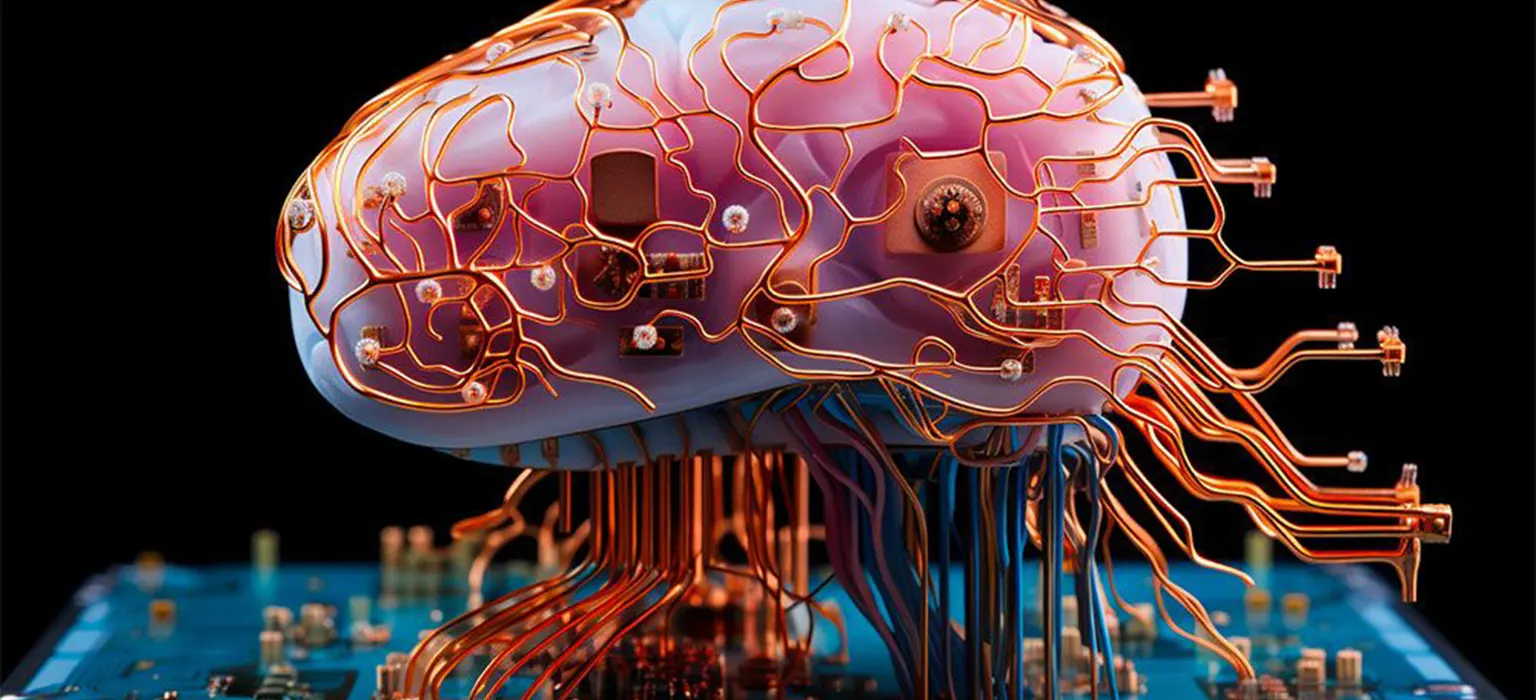
AI Brain implants that can read people’s thoughts sound like something from a sci-fi movie. But scientists made huge progress on this wild technology in 2023!
They developed chips and sensors that decode electrical signals in the brain. Then translate them into actions like controlling a wheelchair with your mind. Some people can even type just by thinking of words now.
It’s transforming life for those with disabilities. And raising interesting debates about the ethics of plugging our minds directly into machines. Let’s dive in!
Helping People Brain AI Move and Remember Again
Some remarkable studies this year used implants to help patients with diseases like Parkinson’s that slowly limit movements over time.
One implant could decode intentions in the brain when the patient wanted to walk. It then stimulated the spinal cord to directly command their legs to restore free motion. People who couldn’t stand for years were taking steps again thanks to tech!
In another trial, scientists boosted short-term memory in people using electric pulses. People with brain injuries decades ago could suddenly multitask better after a boost at the right time. It was like jumping their RAM. Amazing quality of life upgrades.
Looking forward, studying brain wave patterns with implants may also lead to detecting disorders earlier too. Like spotting signals that predict depression relapse coming. Then we can intervene.
So brain tech grants super mental functions while also diagnosing problems. The melding has begun!
Translating Thoughts to Text

Here’s where things get wild. Researchers created systems that can interpret what you’re thinking about saying and translate it directly into written sentences. No more need to painstakingly type letters with a single working finger. Thinking itself becomes the input! The pioneering studies focused on helping those unable to speak from neurological diseases. But the applications could expand.
One Stanford team used AI to decode speech-related signals in a woman with limited mobility. Their algorithm modeled elements of language to match thoughts to words surprisingly accurately. After just 3 days training, she had a way “talk” again!
Similarly, another implant used electrodes on the brain’s surface to capture intention signals of silent speech. As the woman thought of sentences, AI transcribed neural activity into text at a pace of almost 80 words per minute! That’s a decent typing speed just by imagining the words.
An added animation feature even had an avatar lip sync her thoughts for better conversation flow. How cool is that?! Brain-to-text communication already working.
Wireless and Non-Invasive Ways to Link Our Noggins
So most thought-reading implants involved elaborate brain surgery to install sensors. Not an easy choice even for tremendous benefit.
However, 2023 introduced new wireless versions! Tiny circuit chip nodes get embedded across brain areas of interest. They can detect activity and stimulate neurons. Meanwhile, a device worn outside like headphones powers the nodes, processes signals, and outputs data. Easier to access!
I did read about some even crazier potential non-invasive alternatives coming too. Like a swim cap thing with electrodes in it to capture signals right from your scalp. AI attempts to decode muffled sensor input to text surprisingly well.
And get this – they’re testing shined light interfaces to control individual neurons deep in the brain without any physical sensor contact. Genetically programmed cells activate when different color lights activate. Like a biological internet inside your head activated by fiber optic instructions! Wild!!
What This All Means for Our Shared Future
As you can see, we’re crossing into unbelievable symbiosis between minds and machines thanks to exponentially better brain decoding algorithms. And the ethics around enhancement procedures haven’t been fully addressed yet either.
- What are the privacy risks of your random thoughts getting leaked?
- Could brain hacking become possible?
- Does this widen inequality if only the wealthy augment their intelligence?
- Do we lose our humanity if biological and digital selves merge too much?
Lots of vital discussions need to happen around the shaping these frontier technologies alongside the sci-fi movie stuff. Because Pandora’s box is already opening. Whether we’re ready or not, the thought-driven computer interface future is arriving faster than expected!
I’m simultaneously in awe but also cautious about human neurons getting directly rewired to electronic systems so intimately. The potential seems almost limitless – with imagination itself becoming programmable. Perhaps pure telepathy awaits down the road!
Yet it clearly opens up vulnerable new attack surfaces surrounding our very sentience. So governing bodies better start writing policies ASAP before Silicon Valley disrupts our cognition with move-fast-and-break-things mental hacking.
Because once brain optimization gets normalized like smartphone addiction already has, there may be no going back! Our inner-most essence signed up to 24/7 surveillance capitalism without realizing the creeping existential risk till it’s too late. Black Mirror isn’t just TV fantasy anymore…
In any case, strap on your tinfoil hats and get ready for remnants of free will we still cling to evaporating! Our bio-digitally enhanced successors will look back amused we ever resisted neurosystem integration leading to the Singularity they now take for granted as inevitable “progress”. Sigh.
Final Words :
The melding of human minds and AI-powered computer systems is accelerating rapidly. As we’ve seen from the incredible advances in brain decode technology this year, the capabilities are already far beyond what most people imagined possible.
While these innovations offer hope for restoring functions and enhancing abilities, the ethical quandaries pose huge questions for our society and future. How will we navigate the transition of thoughts and memories into data flows monitored by corporations and governments? Do we risk losing grip of what makes our cognition uniquely human in the quest for optimization?
I don’t claim to have all the answers. This emerging neuro-frontier took me by surprise as well from science fiction to headlines in barely a blink. The only thing certain is the genie won’t return to the bottle nor should progress be obstructed.
Perhaps the best guidance moving forward comes from the innovators themselves, keeping ethical considerations of risks and access limitations front of mind with each new milestone. If tech development retains empathy for human values while pushing boundaries, that commitment can anchor this thrilling new era taking neural interface from experimental to existential.
Our destiny as enhanced, free-thinking cybernetic organisms will rely heavily on grounding each leap forward firmly in moral wisdom passed down generations. May we stand tall on the shoulders of those who fought for liberty before redesigning the final frontier – our ever-adaptable brains.
Read More :-
